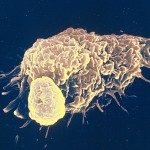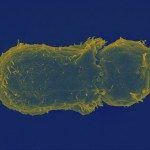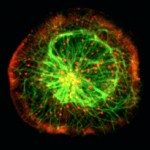Link to Pubmed [PMID] – 26858721
Link to DOI – 10.3389/fimmu.2016.00018
Front Immunol 2016 ; 7(): 18
The generation of phagocytic cups and immunological synapses are crucial events of the innate and adaptive immune responses, respectively. They are triggered by distinct immune receptors and performed by different cell types. However, growing experimental evidence shows that a very close series of molecular and cellular events control these two processes. Thus, the tight and dynamic interplay between receptor signaling, actin and microtubule cytoskeleton, and targeted vesicle traffic are all critical features to build functional phagosomes and immunological synapses. Interestingly, both phagocytic cups and immunological synapses display particular spatial and temporal patterns of receptors and signaling molecules, leading to the notion of “phagocytic synapse.” Here, we discuss both types of structures, their organization, and the mechanisms by which they are generated and regulated.



